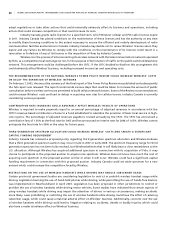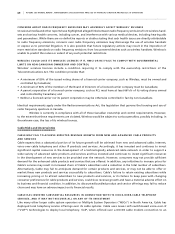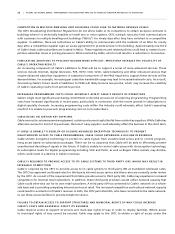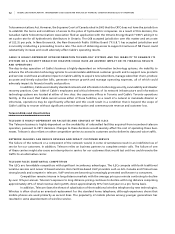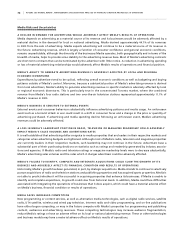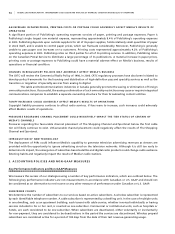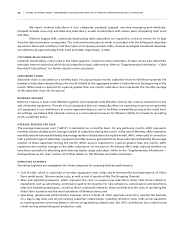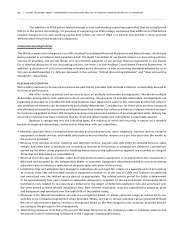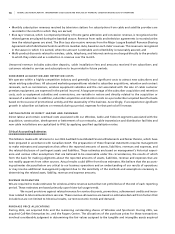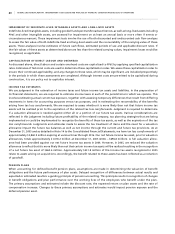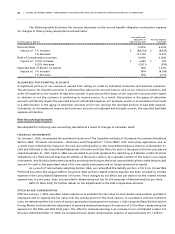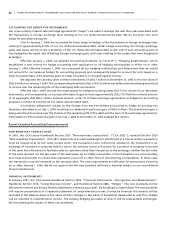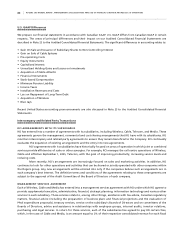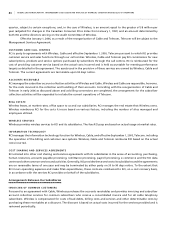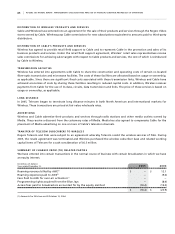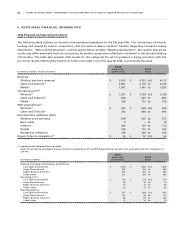Rogers 2005 Annual Report Download - page 82
Download and view the complete annual report
Please find page 82 of the 2005 Rogers annual report below. You can navigate through the pages in the report by either clicking on the pages listed below, or by using the keyword search tool below to find specific information within the annual report.
78 ROGERS 2005 ANNUAL REPORT . MANAGEMENT’S DISCUSSION AND ANALYSIS OF FINANCIAL CONDITION AND RESULTS OF OPERATIONS
• Monthly subscription revenues received by television stations for subscriptions from cable and satellite providers are
recorded in the month in which they are earned;
• Blue Jays’ revenue, which is composed primarily of home game admission and concession revenue, is recognized as the
related games are played during the baseball season. Revenue from radio and television agreements is recorded at the
time the related games are aired. The Blue Jays also receive revenue from the Major League Baseball Revenue Sharing
Agreement which distributes funds to and from member clubs, based on each clubs’ revenues. This revenue is recognized
in the season in which it is earned, when the amount is estimable and collectibility is reasonably assured; and
• Multi-product discounts related to wireless, cable, telephony, and Internet services are charged directly to the products
to which they relate and as a reduction in revenue over the month.
Unearned revenue includes subscriber deposits, cable installation fees and amounts received from subscribers and
customers related to services and subscriptions to be provided in future periods.
SU B S CR I BE R A C Q UI S IT I ON A ND RE T EN T I ON CO S TS
We operate within a highly-competitive industry and generally incur significant costs to attract new subscribers and
retain existing subscribers. All sales and marketing expenditures related to subscriber acquisitions, retention and contract
renewals, such as commissions, wireless equipment subsidies and the cost associated with the sale of cable customer
premises equipment, are expensed in the period incurred. A large percentage of the subscriber acquisition and retention
costs, such as equipment subsidies and commissions, are variable in nature and directly related to the acquisition or
renewal of a subscriber. In addition, subscriber acquisition and retention costs on a per subscriber acquired basis fluctuate
based on the success of promotional activity and the seasonality of the business. Accordingly, if we experience significant
growth in subscriber activations or renewals during a period, expenses for that period will increase.
CA P I TA L IZ A TI O N O F D I RE C T L A BO U R A N D O VE R HEA D
Direct labour and certain overhead costs associated with our Wireless, Cable and Telecom segments associated with the
acquisition, construction, development or betterment of our networks, cable transmission and distribution facilities and
new cable installations are capitalized to PP&E by applying specified capitalization rates.
Critical Accounting Estimates
This MD&A is made with reference to our 2005 Audited Consolidated Financial Statements and Notes thereto, which have
been prepared in accordance with Canadian GAAP. The preparation of these financial statements requires management
to make estimates and assumptions that affect the reported amounts of assets, liabilities, revenues and expenses, and
the related disclosure of contingent assets and liabilities. These estimates are based on management’s historical experi-
ence and various other assumptions that are believed to be reasonable under the circumstances, the results of which
form the basis for making judgments about the reported amounts of assets, liabilities, revenue and expenses that are
not readily apparent from other sources. Actual results could differ from those estimates. We believe that the account-
ing estimates discussed below are critical to our business operations and an understanding of our results of operations
or may involve additional management judgment due to the sensitivity of the methods and assumptions necessary in
determining the related asset, liability, revenue and expense amounts.
RE V E NU E R E CO G N IT I ON
We are required to make estimates for wireless airtime revenue earned but not yet billed as of the end of each reporting
period. These estimates are based primarily upon historical usage trends.
We record provisions against related revenue for service discounts, promotions, achievement credits and incen-
tives related to telecommunications services. These revenue allowances are based on estimates derived from factors that
include but are not limited to historical results, current economic trends and demand.
PU R C HA S E P RI C E A L LO C AT I O NS
During 2004, we acquired Fido and the remaining outstanding shares of Wireless and Sportsnet. During 2005, we
acquired Call-Net Enterprises Inc. and the Rogers Centre. The allocations of the purchase prices for these transactions
involved considerable judgment in determining the fair values assigned to the tangible and intangible assets acquired


